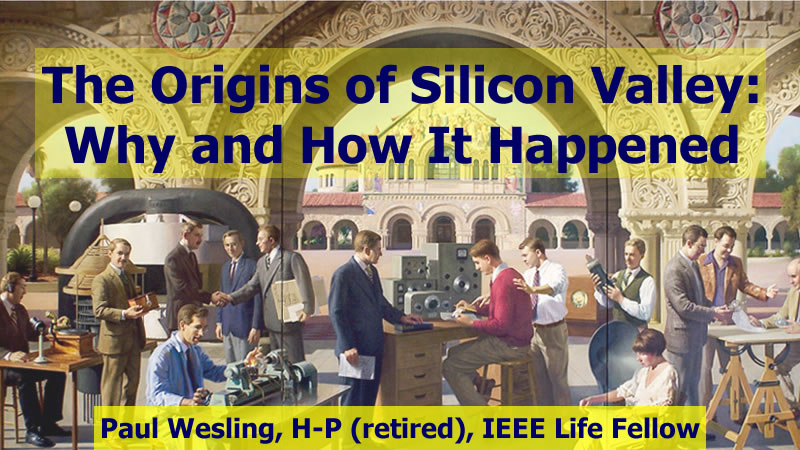“The Origins of Silicon Valley: Why and How It Happened”
“The Origins of Silicon Valley: Why and How It Happened”

Why did Silicon Valley come into being? The story goes back to local Hams (amateur radio operators) trying to break RCA's tube patents, Stanford “angel” investors, the sinking of the Titanic, Fred Terman and Stanford University, local invention of high-power tubes (gammatron, klystron), WW II and radar, William Shockley's mother living in Palo Alto, and the SF Bay Area infrastructure that developed -- these factors pretty much determined that the semiconductor and IC industries would be located in the Santa Clara Valley, and that the Valley would remain the world’s innovation center as new technologies emerged -- computers, then software, mobile, biotech, Big Data, VR, and now autonomous vehicles -- and it would become the model for innovation worldwide
Date and Time
Location
Hosts
Registration
- Date: 21 May 2019
- Time: 05:45 PM to 08:00 PM
- All times are (GMT-05:00) US/Michigan
-
 Add Event to Calendar
Add Event to Calendar
- 2260 Hayward St
- Ann Arbor, Michigan
- United States 48109
- Building: Bob & Betsy Beyster building North Campus
- Room Number: Room 1670
- Click here for Map
- Contact Event Host
- Co-sponsored by UM IEEE Student Branch, TEMS, Young Professionals, & WIE
- Starts 28 March 2019 01:47 PM
- Ends 21 May 2019 05:47 PM
- All times are (GMT-05:00) US/Michigan
- No Admission Charge
Speakers
 Paul Wesling of IEEE Life Fellow, BS-EE, MS-MatSci (Stanford U); retired from H-P/Tandem
Paul Wesling of IEEE Life Fellow, BS-EE, MS-MatSci (Stanford U); retired from H-P/Tandem
“The Origins of Silicon Valley: Why and How It Happened”
Biography:
Paul Wesling has observed the Valley for decades as an engineer, executive, resident, and educator, and has presented this talk world-wide. An IEEE Electronics Packaging Society Distinguished Lecturer, he will give an exciting and colorful history of device technology development and innovation that began in Palo Alto, then spread across the Santa Clara Valley during and following World War II. You'll meet some of the colorful characters – Cyril Elwell, Lee De Forest, Bill Eitel, Charles Litton, Fred Terman, David Packard, Bill Hewlett, Russ Varian and others – who came to define the worldwide electronics industries through their inventions and process development. You’ll understand some of the novel management approaches that have become the hallmarks of tech startups, and the kinds of engineers/developers who thrive in this work environment. He’ll end by telling us about some current local organizations that keep alive the spirit of the Hams, the Homebrew Computer Club, and the other entrepreneurial groups where geeks gather to invent the future.
As vice president of publications for the IEEE Electronics Packaging Society for 22 years, Paul supervised four archival journals and a newsletter. He received the IEEE’s Centennial Medal, the Board's Distinguished Service award, the Society Contribution Award, and the IEEE's Third Millennium Medal.
Agenda
6:00 pm Networking & appetizers
6:40: start of Lecture
